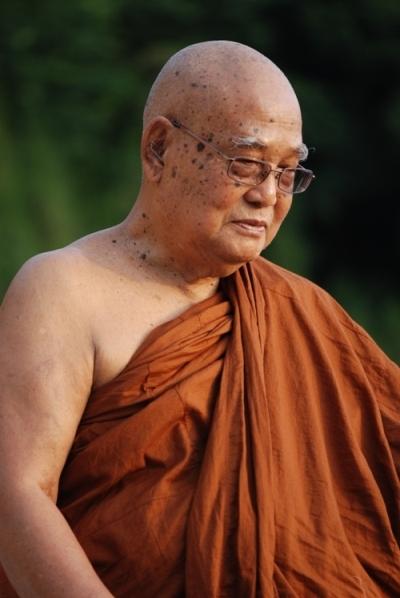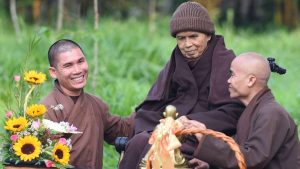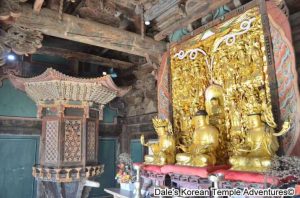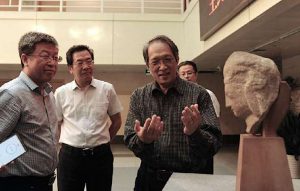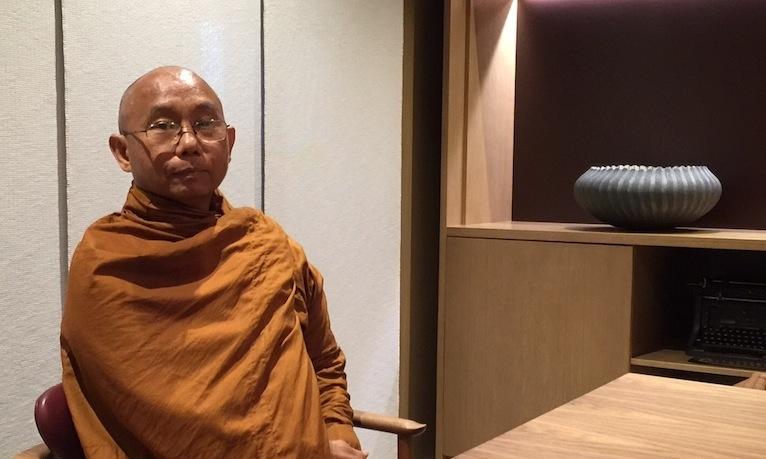
A reserved and quiet monastic from Myanmar, Sayadaw Ashin Nanujjotabhivamsa is most at home talking about the principles and practice of the Dhamma rather than discussing people, even his teacher Sayadaw U Pandita (b. 29 July 1921), who was also born in Myanmar. However, it is difficult to avoid the subject given the latter’s fame as one of the most eminent teachers of vipassana meditation. He is the student and successor of Mahasi Sayadaw U Sobhana (1904–82), who founded the Mahasi tradition of vipassana meditation (variously referred to as the “Mahasi Method” or the “New Burmese Method”). Mahasi Sayadaw famously taught various pioneers of Western Buddhism, such as Alan Clements, Jack Kornfield, and Joseph Goldstein. Along with other teachers of his generation, like S. N. Goenka, Mahasi Sayadaw was a crucial force in reviving the popularity of mindfulness meditation and thus contributing to one of Western Buddhism’s defining characteristics.
Sayadaw Nanujjotabhivamsa gives teachings at the Panditarama Meditation Center in Yangon, which was established in October 1990. The center offers meditators (or “yogis,” as it refers to practitioners) rigorous 60-day retreats (known as Special Retreats) that are popular among both Burmese and foreign practitioners. Every year from 1 December to 31 January, about 100 yogis practice 14 hours of sitting and walking meditation each day in Noble Silence. The usually reticent U Pandita assumes center stage during this unique retreat, giving daily discourses.
Born in 1955, Sayadaw Nanujjotabhivamsa’s first novitiate took place when he was just 10 years old. He ordained as a monk at the age of 20. After three years of monastic life, he grew interested in the philosophy and practice of the Mahasi Method and became an accomplished practitioner under U Pandita’s supervision. Sayadaw Nanujjotabhivamsa spoke fondly of U Pandita’s teaching style: “Sayadaw-ji [a respectful honorific used to address senior masters] is very strict on the rules. He always checks up on the yogis at two levels: the meditators and the teachers of those meditators. He will approach the teachers if the meditators studying under them are encountering difficulty, or to encourage them if the meditators are doing particularly well. He will test them in terms of theory and practice and always tries to learn what improvements they need to make or adjust.”
Sayadaw Nanujjotabhivamsa emulates U Pandita’s pedagogical method when teaching his own students. Looking back on how the master shaped and influenced his own outlook and teaching, he said, “Sayadaw-ji’s aim is only one: to let people experience the taste of Dhamma. He is focused completely on this goal.”
He believes that the virtues of the Mahasi way are sufficiently self-evident to attract practitioners from around the world to learn this tradition. “Breathing in and breathing out is a core feature of vipassana meditation,” said Sayadaw Nanujjotabhivamsa. “But Mahasi vipassana chooses to focus on rising and falling of the abdomen. This physical movement is more evident to the practitioner than the breath’s movements of entering and exiting the nostrils. This object of the rising and falling stomach is clearer. Everyone can feel their abdominals rising and falling, but not everyone remembers that their breath is going in and out.”
Despite the Mahasi Method’s relative fame among Western practitioners thanks to the numerous well-known figures who have practiced it, the objective of Mahasi meditation is technical and plain: to understand correctly the nature of psycho-physical phenomena occurring in the body. Mahasi Sayadaw outlined the technique of observing the abdomen in a comprehensive Dhamma talk on tathagatha.org:
“This is the material quality known as vayodhatu (the element of motion). One should begin by noting this movement, which may be done by the mind intently observing the abdomen. You will find the abdomen rising when you breathe in and falling when you breathe out. The rising should be noted mentally as ‘rising,’ and the falling as ‘falling.’ If the movement is not evident by just noting it mentally, keep touching the abdomen with the palm of your hand. Do not alter the manner of your breathing. Neither slow it down, nor make it faster. Do not breathe too vigorously, either. You will tire if you change the manner of your breathing. Breathe steadily as usual and note the rising and falling of the abdomen as they occur. Note it mentally, not verbally.
“In vipassana meditation, what you name or say doesn’t matter. What really matters is to know or perceive. While noting the rising of the abdomen, do so from the beginning to the end of the movement just as if you are seeing it with your eyes. Do the same with the falling movement. Note the rising movement in such a way that your awareness of it is concurrent with the movement itself. The movement and the mental awareness of it should coincide in the same way as a stone thrown hits the target.”
Although the Mahasi Method is not an ancient style, it maintains the traditional Theravada idea that mindfulness is inseparable from ethical and moral conduct. The reason for focusing on the element of motion is to hone a razor-sharp awareness of one’s own composite phenomena and to extend that awareness to the “external” world. Sayadaw Nanujjotabhivamsa believes that meditation is the primary means of disciplining the mind so that a person can act lucidly and make ethical choices amid the deluge of sensory distractions and desires. Mastering the mind naturally means mastery of ethical behavior: “Once you’re mindful with body and speech, you won’t break the precepts.”
Sayadaw Nanujjotabhivamsa seems to possess a mildly skeptical temperament. “Human beings mostly like to enjoy sensual pleasures and distractions. Modern technology and comforts have amplified exposure and extended access to these pleasures, thereby intensifying our desire for them,” he told me. “People want to be happy but chase the wrong things to gain that happiness. But they’re falling into despair because they can’t find happiness in these things. They are getting tired of all this pleasure that isn’t bringing true happiness.” Meditation and the insight it brings, he insists, are the only way out of this futile cycle.
“Sayadaw-ji once said the present situation of human beings is that their hearts are burning in an air-conditioned room. In the contemporary world we have so many technological comforts, but these can’t solve our basic predicament. He also said that we are like ants: we love honey, but we are stuck and die in the honey. People look for sensual pleasures but die in sensual pleasures.” Sayadaw Nanujjotabhivamsa’s thoughtful, serious face lit up when he mentioned words such as concentration, clarity, and peace. “These are so important because once you have attained stillness, you have the equanimity and non-attachment to make correct decisions and remove stress.”
His concluding thoughts invoked images of water and fire, elemental metaphors that, unlike the wordplay and mischief of the Mahayana shunyata (emptiness) tradition (which deconstructs opposites such as liberation and ignorance or samsara and nirvana), insist on the binary divide between ignorance and liberation. “To extinguish the fire that is suffering, the cool water of meditation is needed. The temple is like a fire station that you can go to, to put out your fire. But prevention is better than having to put out the flame! I’d like to extinguish your fire as well,” he said with a smile at the end of our conversation. I can only imagine how long he would have to stay with me to extinguish that conflagration.
See more
Panditarama Yangon
Instructions to Insight meditation (tathagata.org)



